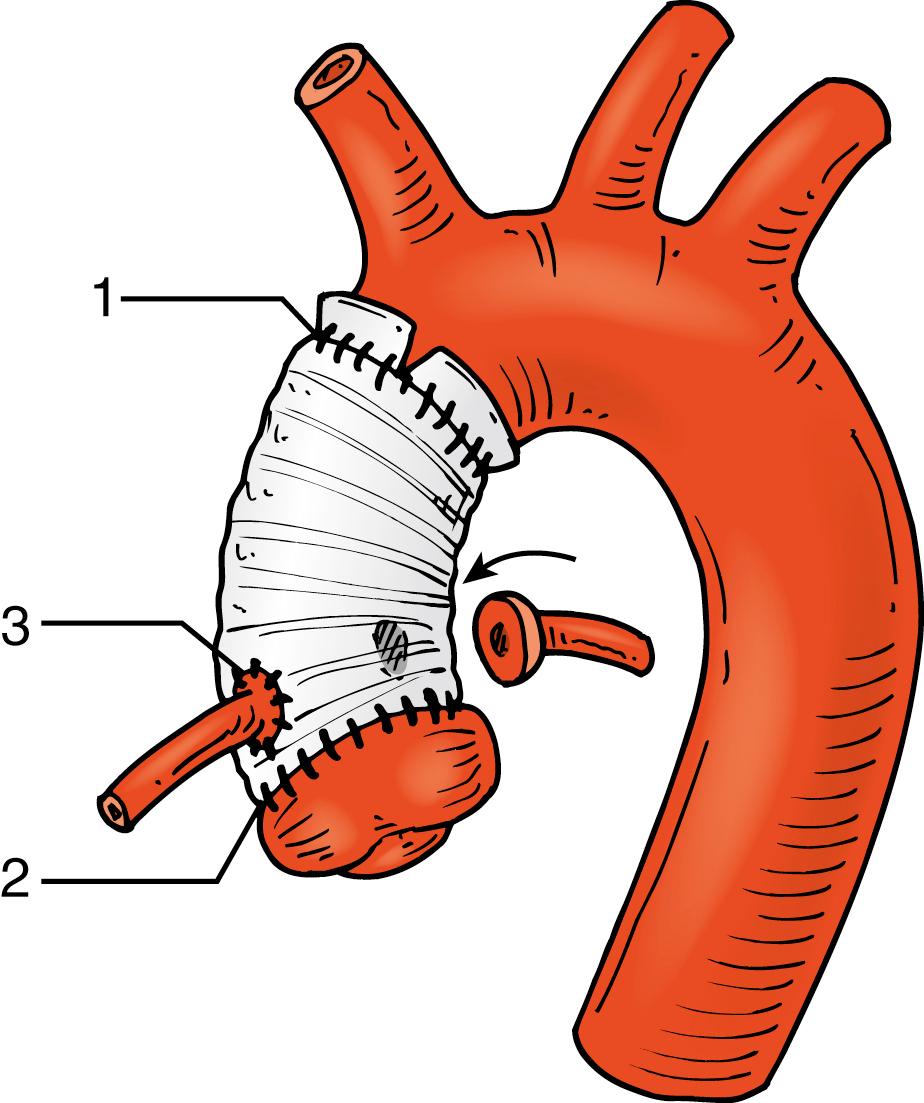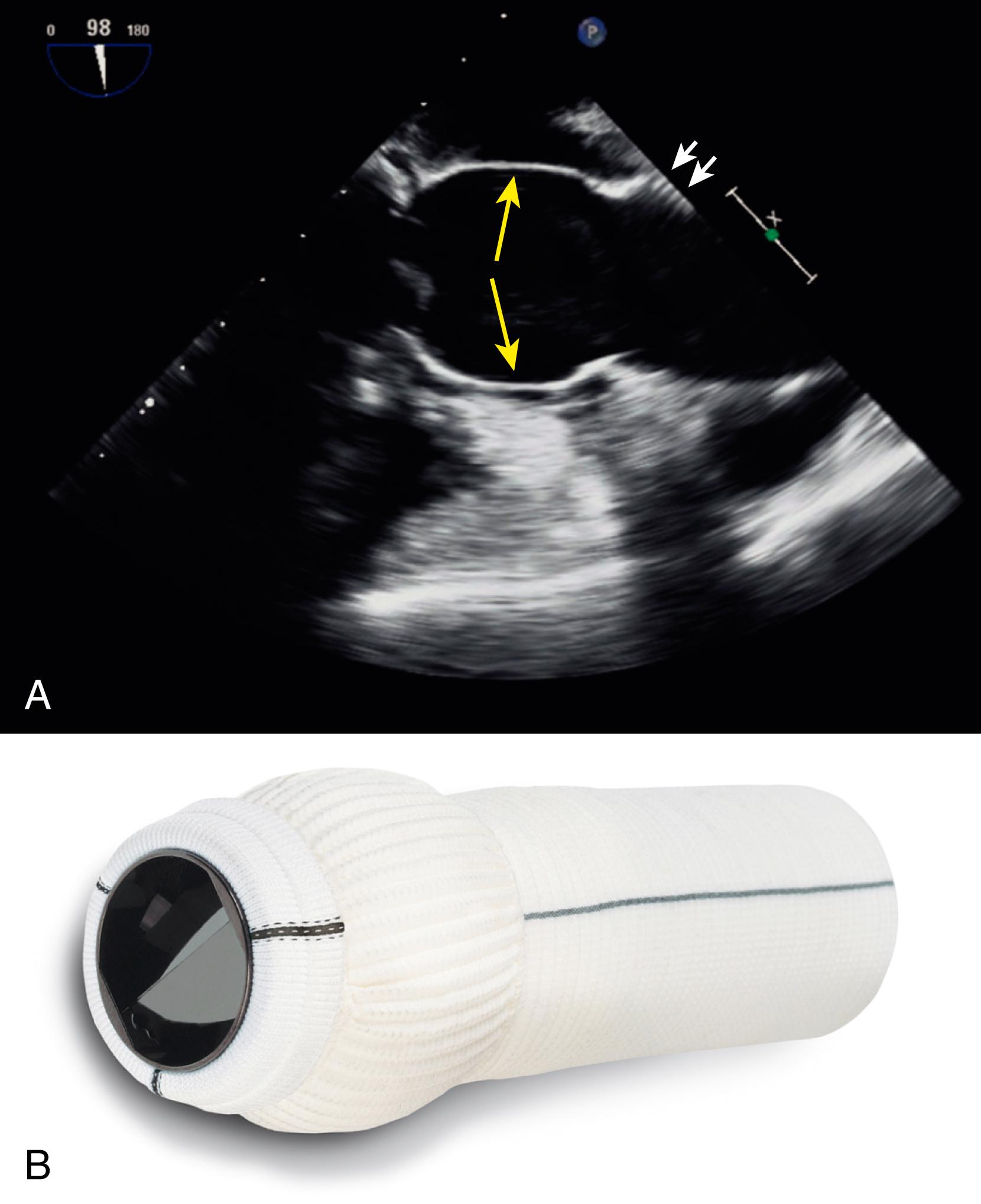Physical Address
304 North Cardinal St.
Dorchester Center, MA 02124
Advances in imaging have raised expectations of improved outcomes for both emergency and elective surgery of the aorta. These advances have allowed early diagnosis and more prompt surgical intervention. Simultaneous with improvements in imaging, improved surgical techniques and postoperative care have enhanced outcomes. As a consequence, more patients are presenting for follow-up care.
For both aortic aneurysms and aortic dissections involving the ascending aorta, the surgeon usually resects the diseased segment and interposes a Dacron graft. Importantly, this approach occasionally does not address diseased segments of the proximal aortic root, arch, or descending aortic segments, which leaves behind a weakened aortic wall because of the effects of the primary disease process. Thus, survivors of the initial repair may remain at considerable risk of future complications, including aneurysmal dilatation and eventual rupture. Consequently, appropriate follow-up requires long-term clinical monitoring and follow-up imaging designed to detect such complications and to allow for timely surgical or percutaneous reintervention. The foundation for such follow-up imaging is adequate baseline imaging that provides a reference for future comparisons of aortic size and appearance. Moreover, baseline imaging will detect technical failures and improper or incomplete repairs that have the potential for subsequent complications.
To evaluate postoperative findings accurately, the imaging physician must possess a general understanding of the surgical technique available for aortic diseases and a full knowledge of the details of the surgical procedure that has been used in the individual patient. In most instances, the postoperative image may differ in important ways from the image seen before the surgical intervention. The expected postoperative image and any possible variations as presented by the relevant imaging modality must be understood. Only then can the spectrum of potential postsurgical complications be accurately recognized and distinguished from the expected postoperative appearance.
Boxes 137.1 and 137.2 list some of the more common aortic procedures and some of the alternative or less common procedures. A brief discussion of some of the more common procedures follows. The scope of this chapter does not permit detailed discussion of modifications of standard procedures or of less commonly used techniques.
Valveless ascending grafts
Interposition technique
Inclusion technique
Composite grafts
Aortic arch grafts
Descending grafts
Endovascular stent grafts
Resuspension of the aortic valve
Valve-sparing root replacement
Use of biologic adhesives and sealants
Coronary artery reimplantation
Elephant trunk procedure
Cabrol shunt procedure
Cabrol coronary graft procedure
Aortic tailoring (aortoplasty)
Fenestration
Obliteration of false lumen (primary repair)
Glue aortoplasty
Insertion of foreign material
Thromboexclusion
Aortic girdling (wrapping the aorta with Dacron mesh)
This currently standard technique includes excision of the diseased segment of the native ascending aorta and its replacement with a polyester (Dacron) graft ( Fig. 137.1 ). The proximal anastomotic site is often supracoronary, typically at the sinotubular junction, and the distal anastomotic site is immediately proximal to the brachiocephalic artery. The anastomotic sites are often reinforced with externally placed circumferential strips of Teflon felt (DuPont ).

The inclusion technique consists of an aortotomy, placement of an artificial graft within the diseased native aorta, and enclosing or wrapping the graft with the native aorta, which is sutured around the graft. This procedure creates a potential space between the graft and the native aortic wall, which has important imaging implications. The use of this technique has diminished significantly (and is largely of historical significance) because of improved graft materials and techniques that have led to decreased bleeding. (This technique was used to provide a space into which leakage through relatively porous grafts could occur to minimize extensive bleeding into the mediastinum.)
The standard approach for repair of acute type A aortic dissection and aneurysms that involve the aortic root is replacement of the aortic valve, root, and ascending aorta with a composite graft. A composite graft, or conduit, is a synthetic (commonly Dacron) aortic graft that includes a directly attached mechanical valve (less commonly a bioprosthetic valve because currently there is no prefabricated composite with a bioprosthetic valve). With composite graft replacement, the coronary ostia are dissected from the native aorta with a rim of the surrounding aorta (button technique) and reanastomosed individually to the composite graft. In select cases of nonpathologic aortic valves, reimplantation or remodeling procedures have become valve-sparing alternatives. Newer graft designs, such as the Valsalva-design graft, recreate the sinuses of Valsalva and more closely resemble the shape and dimensions of the normal aortic root. , This type of graft ( Fig. 137.2 ) theoretically promotes sinus expansion, improves coronary blood flow, and decreases mechanical leaflet stress.

Become a Clinical Tree membership for Full access and enjoy Unlimited articles
If you are a member. Log in here